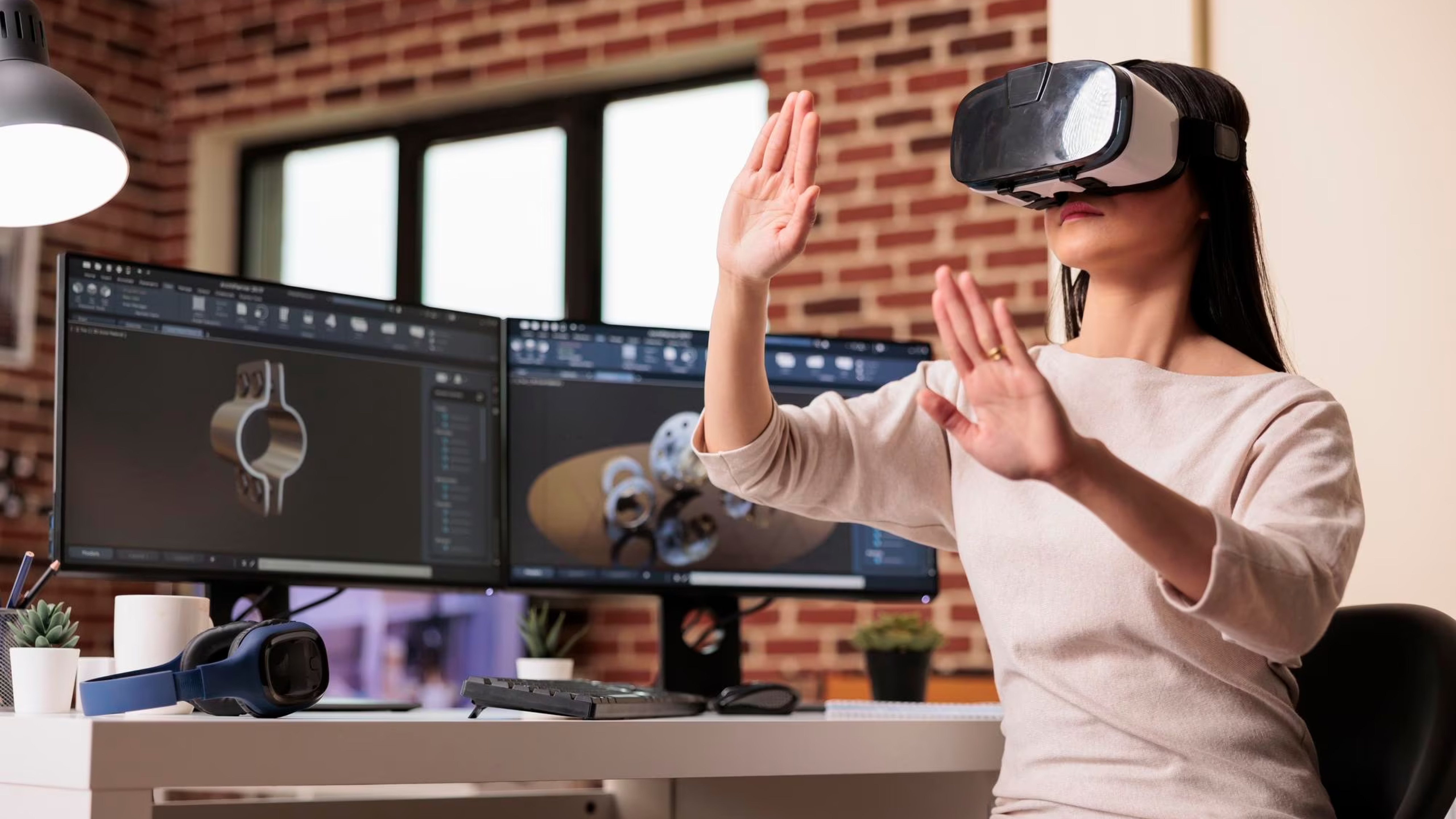
Empowering Ownership: A Symposium On Self-Organization And Problem-Solving In Business
Experts discovered the concept of Open Space Technology during Agile Coach Camp Poland, an event where it has been consistently implemented for several years. The potential it holds made a significant impression on experts, leading to the decision to implement it in their practice. This article is based on the preparations experts took alongside Kamil Puk and Pola Mikołajczak to organize a PM Offsite event. It is divided into three sections, each corresponding to a different event phase. The steps are taken to ensure inclusivity and provide a framework for self-organization.
Open Space Technology is a method for organizing a conference-style event that allows for participant co-creation of both panels and the event as a whole. The agenda is created on the first day without prior preparation, with a few exceptions. This lightweight format empowers attendees to drive the direction of the event. The article will provide insight into what to expect from an Open Space Technology event and how to prepare for it as an organizer. It is essential to remember that the unexpected is to be expected.
Why Try it Out?
Open Space events offer a unique approach to bringing people together, fostering discussions on relevant topics, promoting personal development and ownership, and fostering stronger connections among participants. Plus, it’s less hassle than organizing a traditional conference.
Preparation

Dedicated Communication Channel
To facilitate real-time communication and organization among participants, setting up a dedicated channel on Slack can be extremely helpful. The track can also serve as a side channel for in-person announcements and promote Self-Organization.
Co-Creating The Event
Open Space events are all about co-creation, which also applies to the preparation. By creating a backlog of tasks, ideas, and actions that need to be accomplished before or during the event, participants can take on more responsibility and feel more invested in the event’s outcome. This backlog can also serve as a living repository of ideas. The items that could be included in the backlog are arranging spaces, creating posters, making sure resources are available, leading sessions, etc.
Logistics
Logistics is an essential aspect of any event, and Open Space events are no exception. It is best to start communicating logistics details with participants at least a month before the event, so they have ample time to plan and make arrangements, such as pairing up for shared lodging (if the event is multi-day). Additionally, it may be beneficial to encourage environmentally conscious decisions, such as arranging carpooling to reduce carbon footprint and save cost.
Execution

During the event, the self-organizing nature of Open Space events allows for much of the coordination to be shared among participants through the use of a backlog, as previously discussed. However, having at least one person or group is still essential for overseeing and ensuring the event runs smoothly.
The backlog serves as the foundation for conference preparation and can be printed out and placed in a visible location for easy access. Participants can take on tasks from the backlog, such as arranging spaces or facilitating executive sessions. By assigning ownership of specific tasks to participants, they will feel a superb sense of responsibility and investment in the event’s success. It is recommended to set aside 45-60 minutes before the event for co-organizing and preparing the Open Space with participants.
Open Space Rules
Open Space events encourage creativity and flexibility. The general rules for the event include: starting and ending at any time, prioritizing getting the work done over strict schedules, embracing whatever happens, and the “Law of Two Feet,” where participants are encouraged to leave a session if they are not learning or contributing and seek out something more suitable. You must approach unexpected situations with an open mind and use them to your advantage.
Lastly, before leaving a session, it’s essential to think about how you can contribute to making it more valuable for yourself and others.
Schedule
An effective schedule for an Open Space PM Offsite event could be as follows:
Thursday:
1-2 pm: Lunch
2-2:30 pm: Collective work on the conference backlog
2-4:30 pm: Intros & agenda building
4:30-6 pm: Sessions
6 pm: Dinner & evening activities
Friday:
8-9:15 am: Breakfast
9:15-10 am: Agenda building
10 am-1 pm: Sessions
1-2 pm: Lunch
2-5 pm: Sessions
5-6 pm: Day’s recap
6 pm: Dinner & evening activities
Saturday:
8-9:30 am: Breakfast & check-out
9:30-11 am: Event closing
11 am: Off and away
It’s important to remember that the schedule can be adjusted as needed and to experiment with sessions’ length, recaps, etc.
Agenda Elements

Welcome
This part of the agenda includes making sure everyone is familiar with the mechanics of the event, the rough plan, and the general rules, such as:
- The idea behind the meeting
- The Open Space format (rules)
- What the day is going to be like, including the evening activities
- Breakfast, lunch, and check-out times
- How people communicate during the event, e.g. share book recommendations, fill other participants in on the schedule changes, and make announcements.
- Feedback wall, where people can share feedback and others can react to it.
Introduction Sessions
Two ideas for introduction sessions are:
Ask the people to pair up with someone they don’t know or stand in a circle and answer the following questions: – Why are you here? What thoughts have you arrived with? – What do you need from the group/event? What has been troubling you recently? – Is there anything else you would like to share?
In the first scenario, it takes three minutes for each pair (6 min in total). We did two more iterations with changing teams.
Building The Sessions Agenda
The session agenda is created by having participants take pen and paper and write down the session they want to lead. They note if they will “share” knowledge with or “take” learning from other participants. Hosting a meeting can mean something other than giving a fancy presentation. Sometimes it is just trying to solve a problem while getting a perspective from others. They can also write their name and surname with a phone number, so others can contact them if they want to discuss the topic further or have missed the session. After that, hosts of given sessions come individually and share with others the topic ideas, why this is important, and what they expect. They place the sheet in a chosen room and time.
The Sessions
Each session lasts around 45–60 minutes and is followed by a 15-minute break for everyone to change the room or rest. During a session, the person who suggested the topic gives more context as to why it is essential and what they expect from the participants. The rest can be a simple discussion or a structured workshop – there are no fixed rules here. During each session, it’s generally a good idea to ask somebody to take notes (outcome, main points) on a flipchart-size sheet of paper and bring it to the common area for others to see. The messages can be taken by the session’s lead or a participant. At the end of the offsite, you can read through the thoughts and practicalities of the organized sessions.
The Unofficial (Evening) Part
Having finished the sessions, there is still time for the “unofficial” part of the event, where people mingle. On the selected day of the event, people can add a sticky note to the sessions’ board with their suggestions for activities.
In conclusion, a significant Open Space event requires a well-planned agenda that allows for flexibility and creativity. You can ensure a successful and engaging event by providing a schedule, welcome, and introduction sessions, building the session plan, and allowing for an unofficial evening part.
Manish Surapaneni
A Visionary & Expert in enhancing customer experience design, build solutions, modernize applications and leverage technology with Data Analytics to create real value.
Other articles

Manish Surapaneni
Stop Outsourcing Your Ethics, Tech Leaders
Setting up their own ethics committee is a step forward for tech companies, as they are the clear winners of

Manish Surapaneni
How To Beat The Tech Talent Squeeze In 2023: 6 Proven Strategies
In the current economic climate, with rising costs and increased job turnover, one of the biggest mistakes a company can

Manish Surapaneni
How Augmented Human Intelligence Can Enhance Our Lives With Machines
The advancement of technology has simplified our lives. It has also significantly increased our reliance on electronic devices. MIT Media